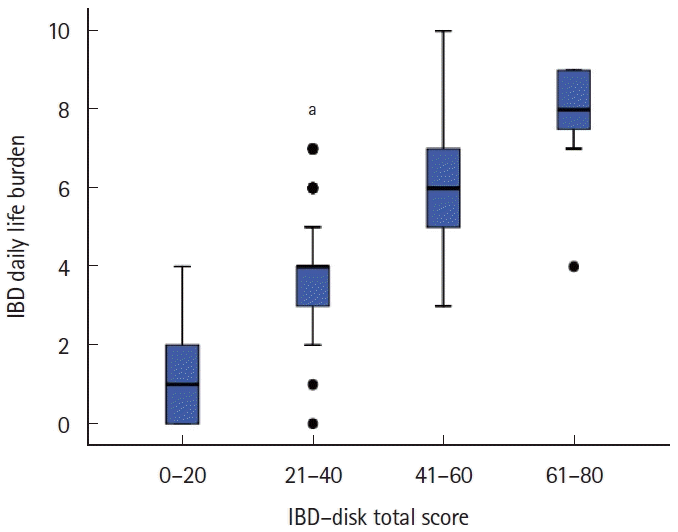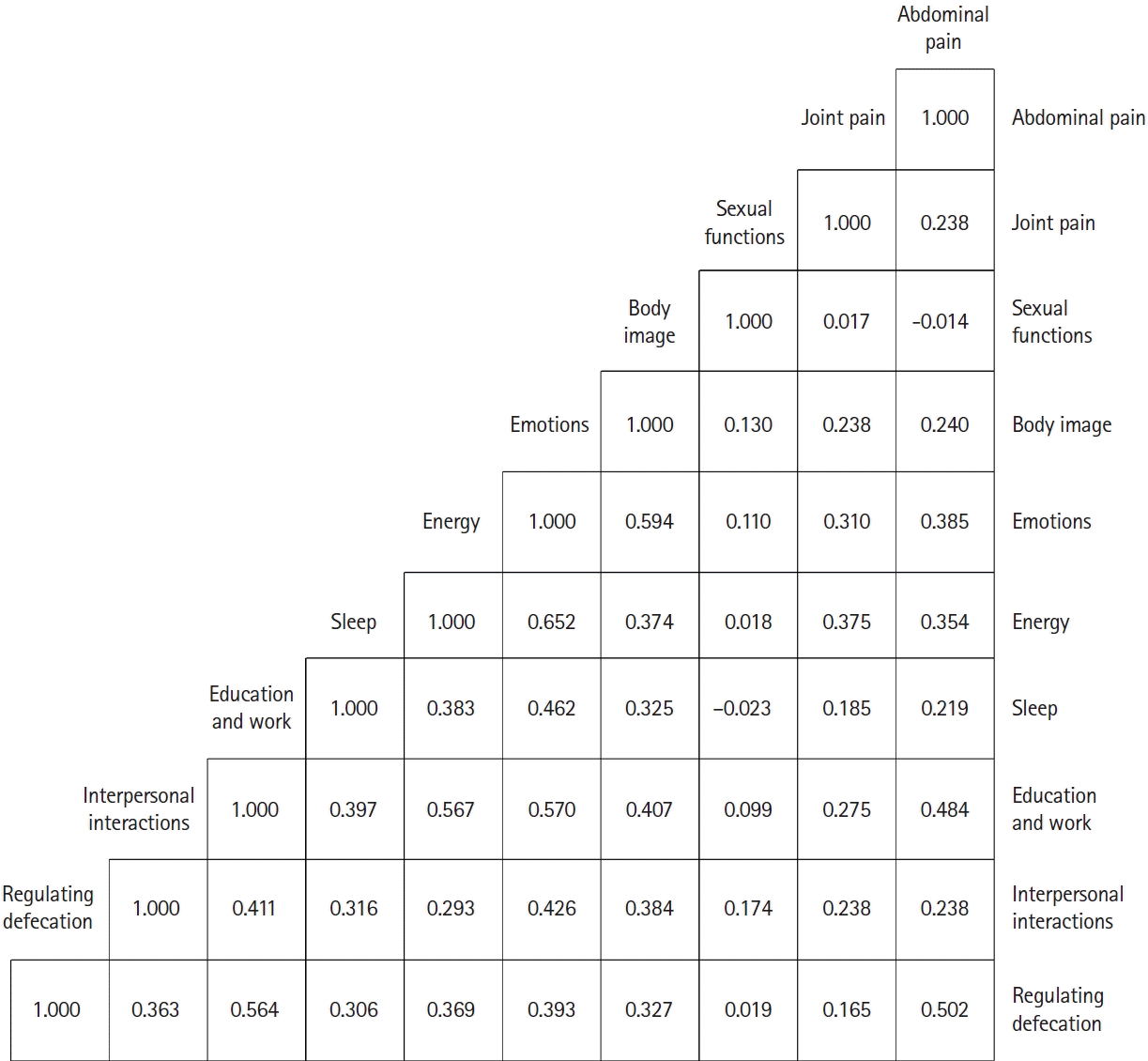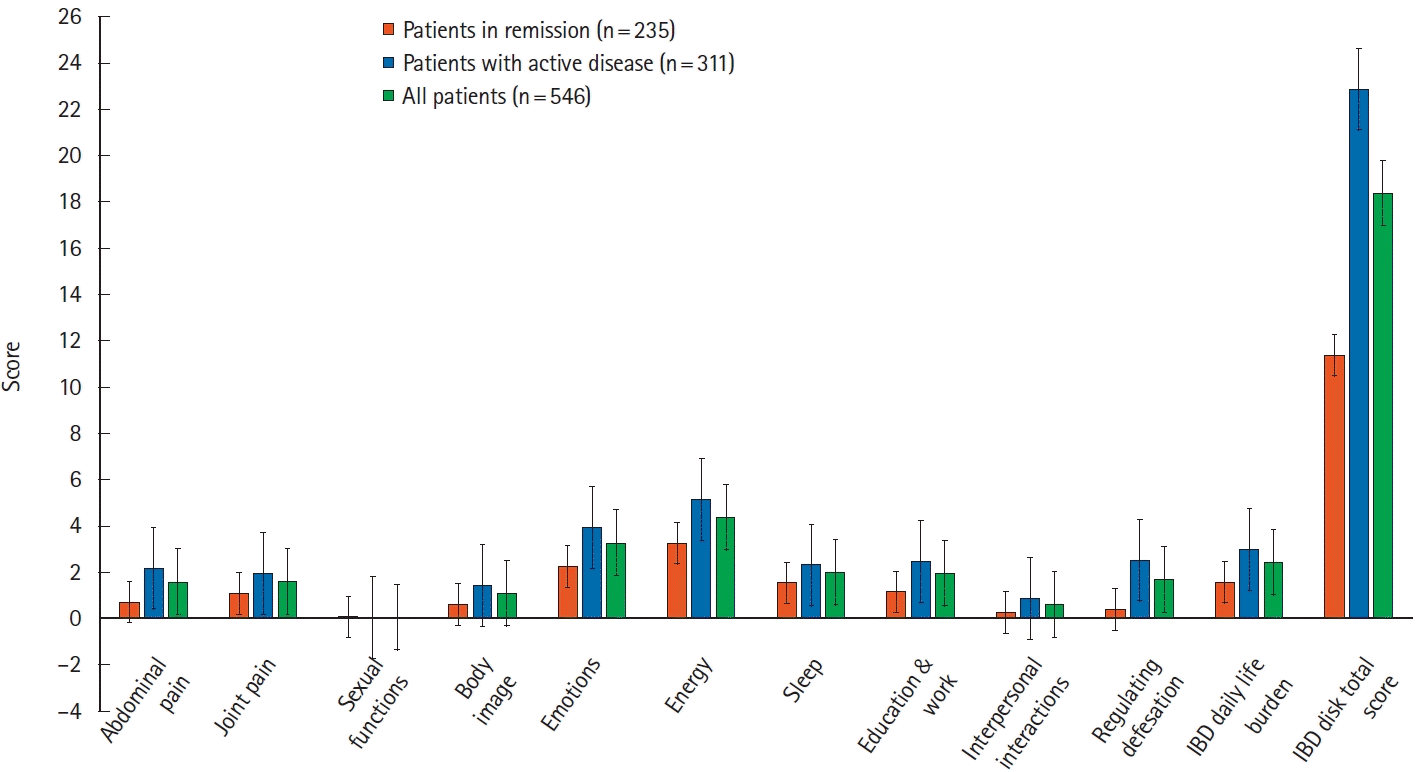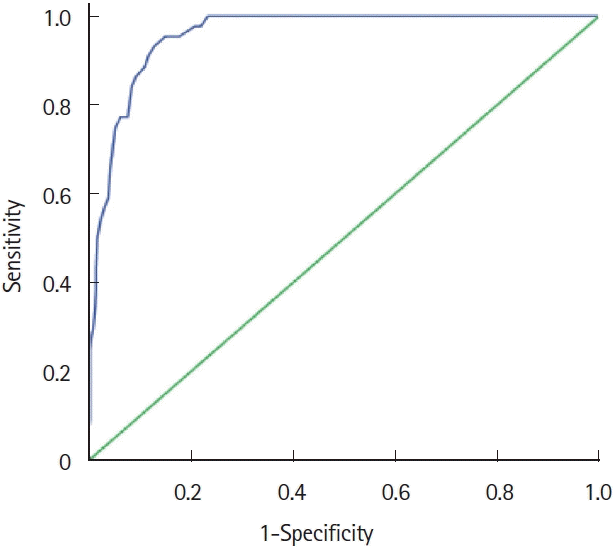1. Ramos A, Calvet X, Sicilia B, et al. IBD-related work disability in the community: prevalence, severity and predictive factors: a cross-sectional study. United European Gastroenterol J. 2015; 3:335–342.

3. Peyrin-Biroulet L, Cieza A, Sandborn WJ, et al. Development of the first disability index for inflammatory bowel disease based on the international classification of functioning, disability and health. Gut. 2012; 61:241–247.

4. Ghosh S, Louis E, Beaugerie L, et al. Development of the IBD disk: a visual self-administered tool for assessing disability in inflammatory bowel diseases. Inflamm Bowel Dis. 2017; 23:333–340.
5. Le Berre C, Flamant M, Bouguen G, et al. VALIDation of the IBD-Disk instrument for assessing disability in inflammatory bowel diseases in a French cohort: the VALIDate Study. J Crohns Colitis. 2020; 14:1512–1523.

6. Gnambs T, Kaspar K. Disclosure of sensitive behaviors across self-administered survey modes: a meta-analysis. Behav Res Methods. 2015; 47:1237–1259.

7. Maaser C, Sturm A, Vavricka SR, et al. ECCO-ESGAR guideline for diagnostic assessment in IBD Part 1: initial diagnosis, monitoring of known IBD, detection of complications. J Crohns Colitis. 2019; 13:144–164.

8. Tadbiri S, Nachury M, Bouhnik Y, et al. The IBD-disk is a reliable tool to assess the daily-life burden of patients with inflammatory bowel disease. J Crohns Colitis. 2021; 15:766–773.

9. Sharma N, Savelkoul E, Disney B, et al. A multicenter study of patient acceptability of the IBD Disk tool and patient-reported disabilities. Dig Dis Sci. 2022; 67:457–462.

10. Satsangi J, Silverberg MS, Vermeire S, Colombel JF. The Montreal classification of inflammatory bowel disease: controversies, consensus, and implications. Gut. 2006; 55:749–753.

11. Lewis JD, Chuai S, Nessel L, Lichtenstein GR, Aberra FN, Ellenberg JH. Use of the noninvasive components of the Mayo score to assess clinical response in ulcerative colitis. Inflamm Bowel Dis. 2008; 14:1660–1666.

12. Turner D, Seow CH, Greenberg GR, Griffiths AM, Silverberg MS, Steinhart AH. A systematic prospective comparison of noninvasive disease activity indices in ulcerative colitis. Clin Gastroenterol Hepatol. 2009; 7:1081–1088.

13. Harvey RF, Bradshaw JM. A simple index of Crohn’s-disease activity. Lancet. 1980; 1:514.

14. Schober P, Boer C, Schwarte LA. Correlation coefficients: appropriate use and interpretation. Anesth Analg. 2018; 126:1763–1768.

15. Shafer LA, Sofia MA, Rubin DT, et al. An international multicenter comparison of IBD-related disability and validation of the IBDDI. Clin Gastroenterol Hepatol. 2021; 19:2524–2531.

16. Dang A, Kanukula R, Shah C, Shetye V. The emerging role of patient-reported outcomes (PROs) in clinical trials: an Indian perspective. Value Health Reg Issues. 2017; 12:24–26.

17. Zhao S, Wang J, Liu Y, et al. Inflammatory bowel diseases were associated with risk of sexual dysfunction in both sexes: a meta-analysis. Inflamm Bowel Dis. 2019; 25:699–707.

18. Zhang J, Wei S, Zeng Q, Wu X, Gan H. Prevalence and risk factors of sexual dysfunction in patients with inflammatory bowel disease: systematic review and meta-analysis. Int J Colorectal Dis. 2021; 36:2027–2038.

19. Beese SE, Harris IM, Dretzke J, Moore D. Body image dissatisfaction in patients with inflammatory bowel disease: a systematic review. BMJ Open Gastroenterol. 2019; 6:e000255.

20. Greuter T, Manser C, Pittet V, Vavricka SR, Biedermann L; on behalf of Swiss IBDnet, an official working group of the Swiss Society of Gastroenterology. Gender Differences in inflammatory bowel disease. Digestion. 2020; 101 Suppl 1:98–104.

21. Trindade IA, Ferreira C, Pinto-Gouveia J. The effects of body image impairment on the quality of life of non-operated Portuguese female IBD patients. Qual Life Res. 2017; 26:429–436.

22. Silva Mendes S, Ferreira P, Antunes P, et al. Validation of the IBD-Disk in a Portuguese cohort. Eur J Gastroenterol Hepatol. 2021; 33(1S Suppl 1):e961–e969.





 PDF
PDF Citation
Citation Print
Print






 XML Download
XML Download